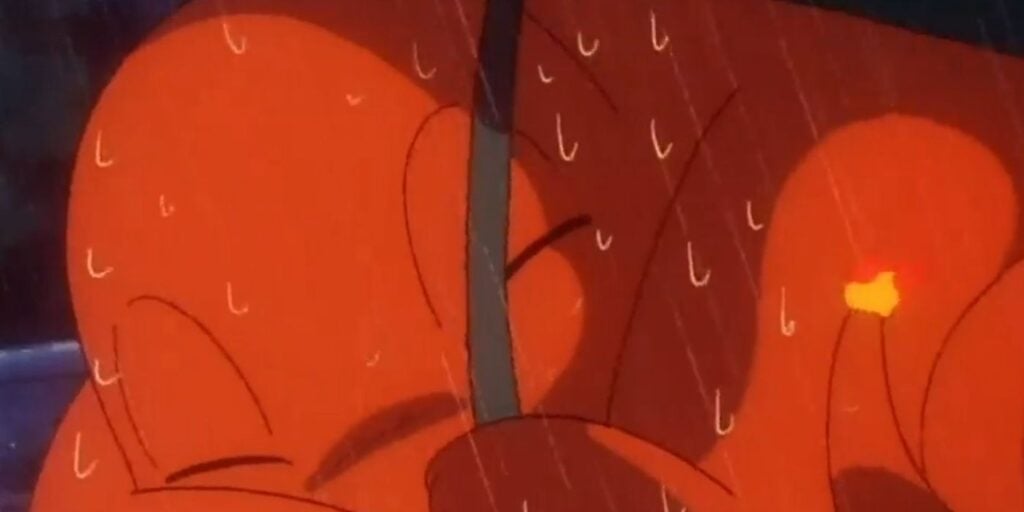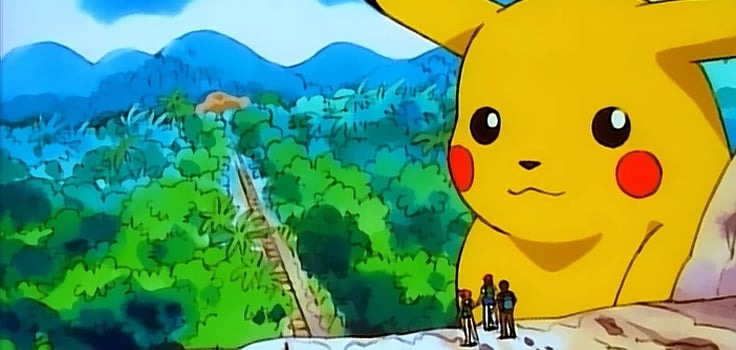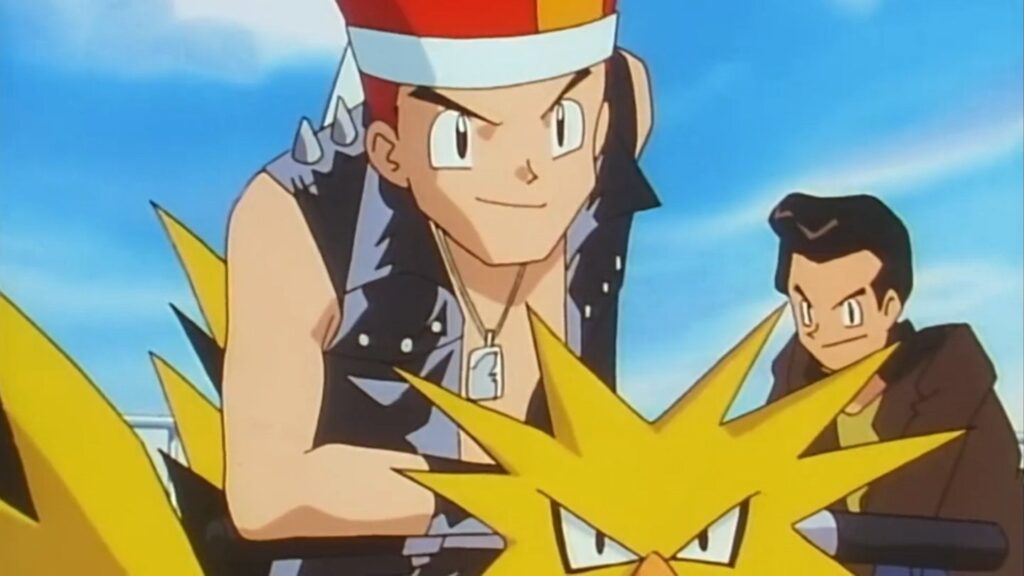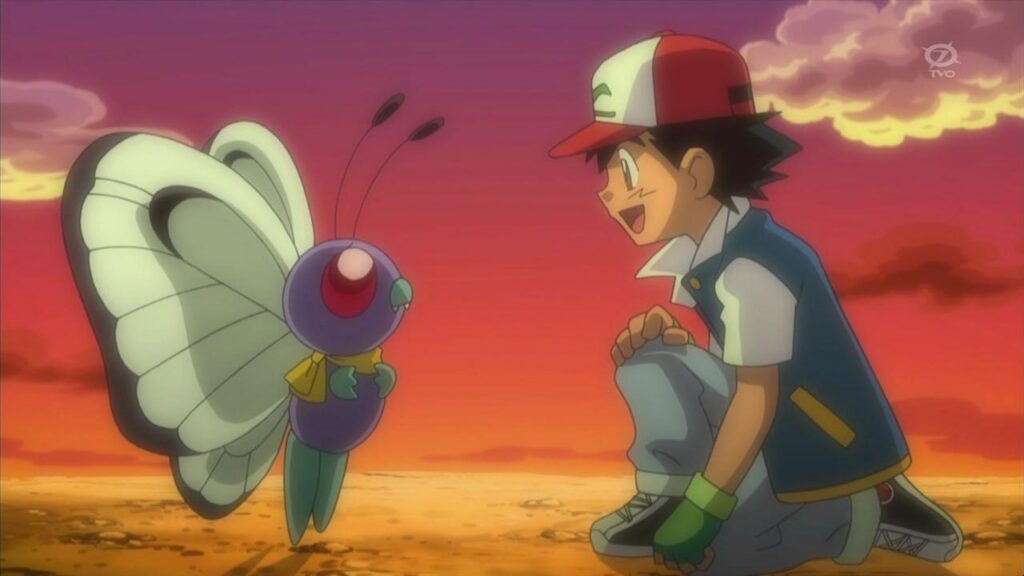
When you’re a kid, friendship isn’t just a part of life. It is life. Your best friend is your partner in crime, your confidant, and your co-creator of imaginary worlds. As a 45-year-old father with four children (ages 3, 7, 10, and 13), I’ve seen firsthand how vital those early relationships can be. I’ve also seen how much kids can learn about being a good friend from the shows they watch.
Whether it’s working through a disagreement, cheering someone on, or learning to say sorry, animated series have a unique way of teaching those social-emotional lessons in a form that really lands. We’ve had many a family dinner conversation sparked by a cartoon conflict or heartwarming team-up. And among the best of the bunch? Pokémon: Indigo League.
It may be a show about catching creatures and battling gym leaders, but at its heart, Pokémon is about friendship. Friendship between trainer and Pokémon. Friendship between the main characters. Even friendship with rivals. If you’re looking for episodes that help kids understand loyalty, kindness, and teamwork, start here.
Pokémon: Indigo League (Recommended For Ages 6 to 10)
Pokémon: Indigo League follows 10-year-old Ash Ketchum as he sets out on his journey to become a Pokémon Master. Along the way, he travels with Misty and Brock, makes new friends, and faces off against rivals like Gary Oak. While the show features battles, adventure, and fantastical creatures, it also delivers heartfelt stories about persistence, trust, and growing up.
The following episodes are compelling for teaching kids what it means to be a good friend. Whether it’s showing kindness to someone who’s struggling, learning when to let go, or building trust with unlikely allies, each one offers something different and meaningful for kids learning how to navigate friendship. I’ve included some of the reactions from my three youngest children, as my 13-year-old daughter has zero interest in the show.
Charmander: The Stray Pokémon (Episode 11)

Ash and his friends encounter a Charmander sitting alone in the rain on a rock, clearly waiting for someone. They eventually learn that Charmander’s trainer, Damian, has abandoned it, considering it too weak to bother with. Despite Damian’s cruelty, Charmander remains loyal and refuses to leave the spot where he was told to wait. When a storm intensifies and Charmander’s health declines rapidly, Ash and Brock act quickly to get him to safety and earn his trust.
What Kids Learn From The Episode: Ash uses his jacket to shield Charmander from the rain and carries him through the storm to get medical help. This demonstrates that real friendship is about protecting someone who’s been mistreated and being there when others aren’t.
My 10-year-old was visibly frustrated by Damian’s behavior and asked in an annoyed tone, “Why would someone leave their Pokémon like that?” That sense of injustice engaged his empathy. I’m a big fan of teaching my children about empathy at every opportunity, and I recently wrote about some of my favorite animated children’s movies that teach empathy.
Pikachu’s Goodbye (Episode 39)

During a stop in the forest, Ash and Pikachu discover a group of wild Pikachu living freely. Pikachu bonds quickly with the others, playing and seeming happier than ever. Ash begins to wonder whether Pikachu would be better off staying with them rather than continuing the journey. Even though it breaks his heart, he prepares to say goodbye and walks away to let Pikachu decide. When Ash thinks Pikachu is gone for good, Pikachu runs back to him, choosing to stay by his side.
What Kids Learn From The Episode: Ash’s willingness to let Pikachu go—even though it hurt—shows that friendship often means putting someone else’s happiness first.
I asked my three-year-old if she liked the episode, and she asked for a popsicle, so hopefully that clears a lot up for everyone.
Island of the Giant Pokémon (Episode 17)

After a shipwreck separates the Pokémon from their trainers, Pikachu, Bulbasaur, Charmander, and Squirtle wake up alone on a mysterious island. With no humans around and no idea where they are, the Pokémon must rely on each other to find food, escape danger, and make their way back. Despite being from different types and with distinct personalities, they figure out how to work together through trial and error.
What Kids Learn From The Episode: Even though there’s no human dialogue for most of the episode, the Pokémon communicate through actions and expressions. Their teamwork and problem-solving teach kids that friendship doesn’t always need words—it’s about understanding and helping each other.
Bulbasaur and the Hidden Village (Episode 10)

While exploring the forest, Ash and his friends come upon a secret village where a woman named Melanie takes care of abandoned and injured Pokémon. Bulbasaur protects the sanctuary fiercely and challenges Ash when he tries to take a Pokémon. Over time, Ash proves himself by helping defend the village from Team Rocket and shows that he’s not there to take advantage of anyone. Bulbasaur sees this and ultimately decides to join Ash voluntarily.
What Kids Learn From The Episode: Ash earns Bulbasaur’s trust not by force, but by showing patience, kindness, and respect. It’s a strong example of how trust is something you build, especially with someone who’s been burned before.
I didn’t think to capture my 7-year-old daughter’s thoughts about this episode, but she did mention that she thinks Bulbasaur is “adorable” and that he’s her “favorite character” now. I should note that her “favorite” is usually whatever new Pokémon shows up next.
Snow Way Out! (Episode 65)

When a sudden snowstorm hits while Ash and his Pokémon are traveling through the mountains, they become trapped without shelter. Ash refuses to put himself first and works quickly to build a snow cave to keep his Pokémon safe. As the temperature drops, Ash stays with them, wrapping his own body around the Poké Balls to keep them warm, willing to risk his safety so they can survive.
What Kids Learn From The Episode: Ash doesn’t battle or win a competition in this episode—he does what a true friend does: he stays, protects, and sacrifices.
I asked my 10-year-old what he thought about Ash’s actions in the episode, and he offered a simple, “Ash didn’t leave them—he stayed because they needed him.” It’s a simple lesson about friendship, going beyond the fun and easy times, and the support system we need to create among our friends.
The Bridge Bike Gang (Episode 36)

Ash, Misty, and Brock are trying to deliver medicine to a sick Pokémon across a long bridge, but a rowdy bike gang blocks their path. The gang initially tries to intimidate them, but Misty stands up to them with clever thinking and confidence. Instead of fighting back, she remains calm and ultimately earns their respect. The gang even helps clear the way so they can complete their mission.
What Kids Learn From The Episode: Misty’s courage and calm show that bravery isn’t always about being the loudest—it can also mean standing firm and treating others with respect.
While my kids didn’t comment openly about this episode, I found it was a simple lesson about respect and understanding.
Bye Bye Butterfree (Episode 21)

Ash’s Butterfree falls in love with a pink Butterfree during migration season. Ash encourages his Pokémon to follow their hearts, even though it means they will part ways. He reflects on all the memories they’ve shared and ultimately releases Butterfree so it can start a new life. It’s one of the first major goodbyes in the series.
What Kids Learn From The Episode: Ash shows that friendship isn’t about possession—it’s about supporting someone else’s growth. Letting Butterfree go is a massive moment of maturity.
My 3-year-old said, “Butterfree went home,” and while the gravity of the situation may partially go over a young child’s head, at her age, even the basic idea of letting something go can register in small, emotional ways.
Showdown At Pewter City (Episode 5)

Ash arrives in Pewter City to challenge his first Gym Leader, Brock. At first, Brock seems cold and strict, and Ash loses the battle badly. However, Ash returns with a new strategy and determination. After a rematch is interrupted, Brock surprises Ash by awarding him the badge anyway, explaining that he sees potential in Ash and believes in him. Later, we learn thatBrock had been staying behind to care for his many younger siblings.
What Kids Learn From The Episode: Brock’s kindness and willingness to support Ash—even while he’s sacrificing his own dreams—shows that leadership can be thoughtful, humble, and generous.

